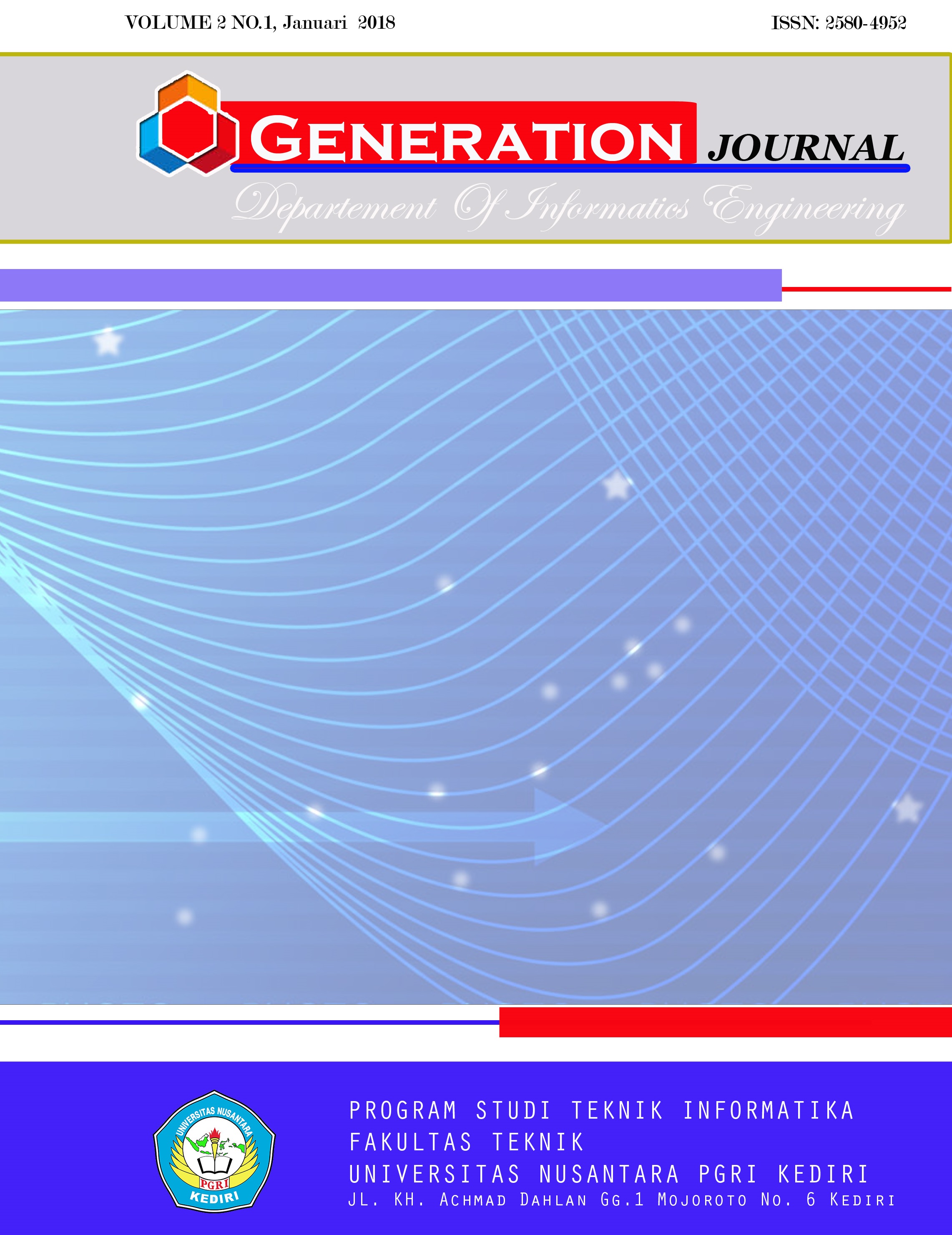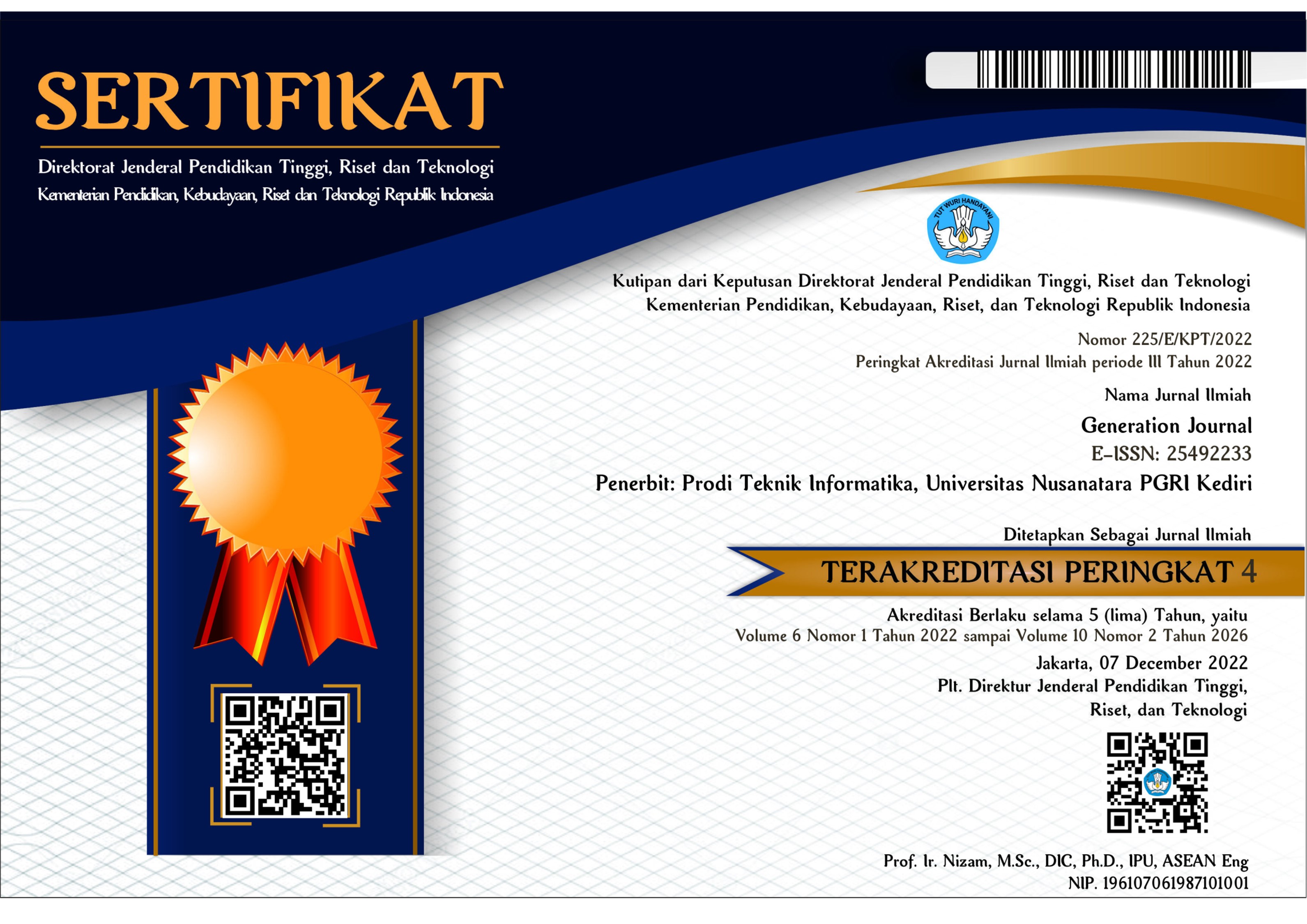Irwan falud den DETEKSI KEMATANGAN BUAH RAMBUTAN BERDASARKAN WARNA MENGGUNAKAN METODE DISCRETE COSINE TRANSFORM
DOI:
https://doi.org/10.29407/gj.v2i1.11852Abstract
Abstrak– Dalam kehidupan saat ini teknologi semakin canggih dan berkembang pesat
tidak ketinggalan teknologi untuk pertanian. Salah satunya teknologi untuk pemanenan buah
rambutan dan pengolahan citra salah satu yang dapat digunakan dalam pemanenan buah rambutan
dalam hal ini aplikasi akan mengenali buah mentah, matang, kemampo dan kematangan. Dalam
hal ini penelitian untuk mendeteksi kematangan buah rambutan disini menggunakan metode
Discrete cosines transform(DCT). Apakah dengan metode Discrete Cosine Transform dapat
mendeteksi kematangan buah rambutan.
Penelitian dilakukan di desa Bedali Ngancar kabupaten Kediri. Dengan menggunakan
buah rambutan berjenis aceh. Buah aceh di foto di atas kertas putih untuk mendapatkan citra yang
akan di gunakan dalam penelitian. Setelah itu citra gambar rambutan yang semula berwarna RGB
(Red, Green, Blue) diubah menjadi Grayscale setelah itu dilakukan proses DCT dan untuk
pengenalannya dilkukan proses Euclidean Distance. Metode DCT dapat digunakan untuk
mendeteksi kematangan buah rambutan. Dari penelitian dengan DCT semakin bayak data Training
semakin akurat mengidentifikasi kematangan buah rambutan
Downloads
Published
Issue
Section
License
Authors who publish with this journal agree to the following terms:
- Copyright on any article is retained by the author(s).
- The author grants the journal, the right of first publication with the work simultaneously licensed under a Creative Commons Attribution License that allows others to share the work with an acknowledgment of the work’s authorship and initial publication in this journal.
- Authors are able to enter into separate, additional contractual arrangements for the non-exclusive distribution of the journal’s published version of the work (e.g., post it to an institutional repository or publish it in a book), with an acknowledgment of its initial publication in this journal.
- Authors are permitted and encouraged to post their work online (e.g., in institutional repositories or on their website) prior to and during the submission process, as it can lead to productive exchanges, as well as earlier and greater citation of published work.
- The article and any associated published material is distributed under the Creative Commons Attribution-ShareAlike 4.0 International License














